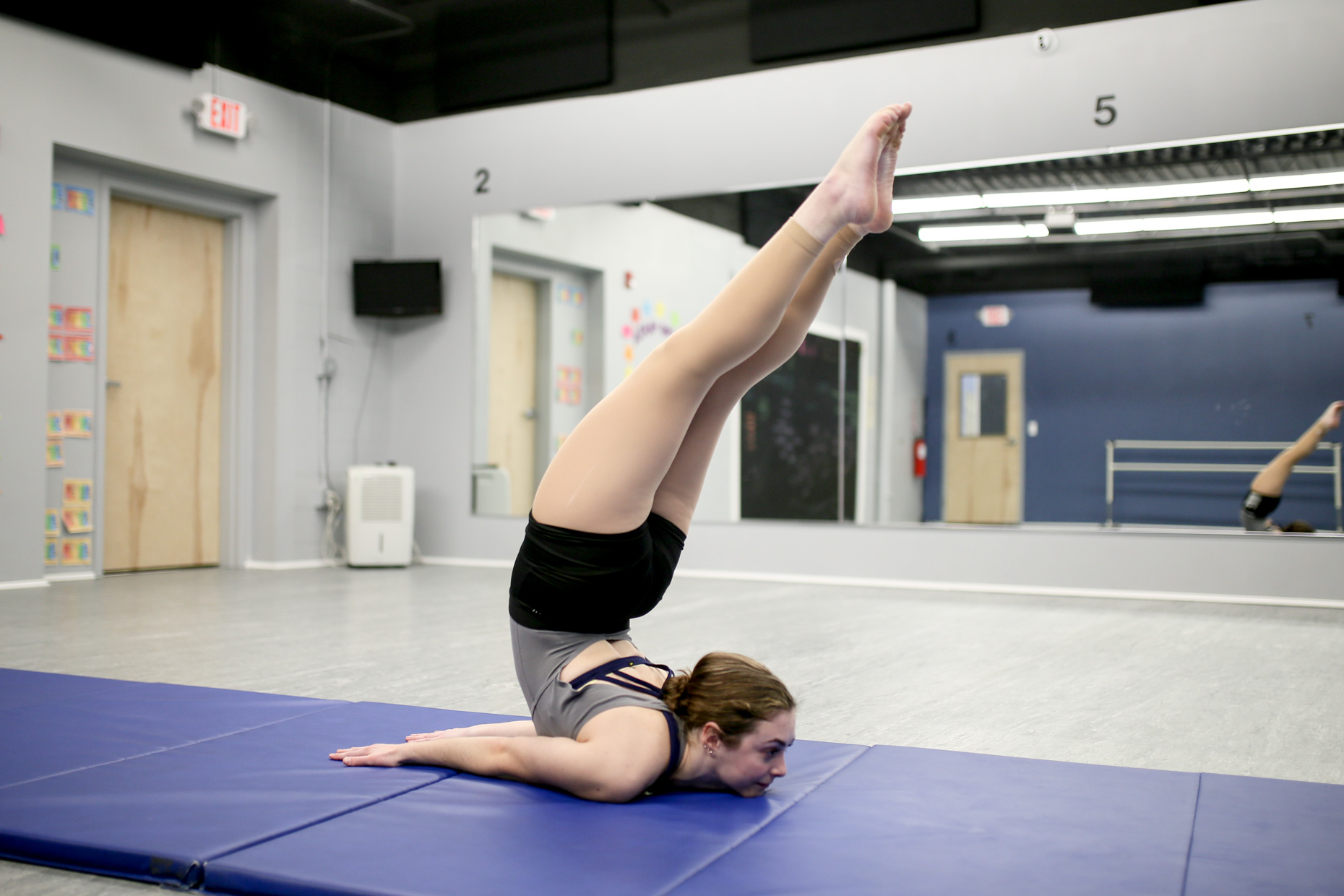What IS Acro? On our website, “Acro” is defined as such:
 Acrobatics uses strength and flexibility to perform gymnastic-based tricks. In this class, students perform conditioning exercises to prepare them for increased difficulty. It teaches flexibility, balance, strength, and coordination. DIDC Acro Instructors are certified by Acrobatic Arts and classes follow the Acrobatic Arts syllabus.
Acrobatics uses strength and flexibility to perform gymnastic-based tricks. In this class, students perform conditioning exercises to prepare them for increased difficulty. It teaches flexibility, balance, strength, and coordination. DIDC Acro Instructors are certified by Acrobatic Arts and classes follow the Acrobatic Arts syllabus.But what does that mean? What really is Acro? What happens in an Acro class? What are the benefits?
Since 2009, Dance Innovations has offered Acro classes for dancers of all ages. As of 2016, we officially adopted the Acrobatic Arts syllabus and our Acro instructors are Acrobatic Arts-Certified as well. Here’s what Acrobatic Arts’ has to say:
“The Acrobatic Arts program is based on safe and effective progressions with proven results in five divisions of AcroDance: Flexibility, Strength, Balancing, Limbering and Tumbling. Developed with input from professionals and experts in ballet, modern dance, jazz, contortion, artistic gymnastics, rhythmic gymnastics, sport acrobatics, yoga, acro yoga, pilates, physiotherapy, hand balancing and more. Simple thoughtful progressions take the beginner preschool level dancer from log rolls and summersaults to the advanced dancer tumbling effortlessly across the stage!Acrobatic Dance, or acro as it is commonly referred to by dancers and dance professionals, is the beautiful fusion of classic dance technique and the precision and athleticism of acrobatic elements. Often defined by unique choreography, acro dancers seamlessly blend musicality, emotional expression, line and extension with acrobatic movements in a dance context.Acro’s roots are in traditional Chinese dance, later appearing as a favored style on the Vaudeville stage. More recently, acro gained popularity with the wide spread success of the contemporary circus productions of Cirque du Soleil. Main stream media including dance television programs like ‘So You Think You Can Dance’, ‘America’s Best Dance Crew’ and ‘Dance Moms’ have further fueled it’s demand in amateur competitive dance and studio settings.Students will begin with basic stunts such as forward rolls, cartwheels, and beginner balances. More advanced students will continue to add to their repertoire with more advanced tumbling, balances, and partner lifts/stunts.Dancers who train through the Acrobatic Arts syllabus have balanced development, are stronger, more flexible and fearless. They are more technically skilled, have fewer accidents, and are less likely to develop chronic injuries.”
References:
https://www.acrobaticarts.com/

